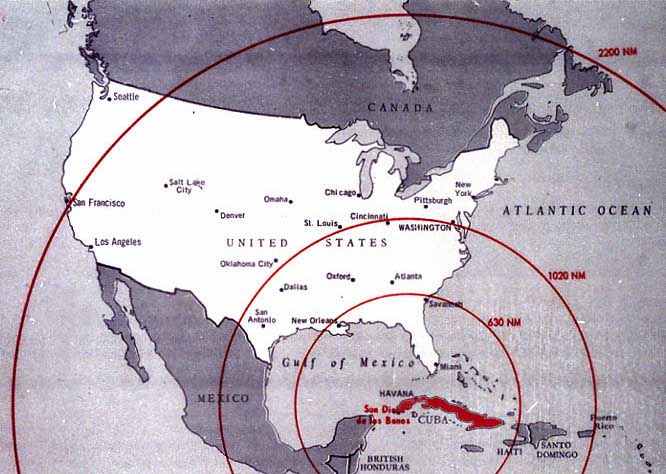Creating Pockets of Nuclear Awareness
Professor Emeritus of Electrical Engineering
Stanford University
Why pockets of awareness?
 Human beings are social animals with a kind of
herd mentality that has impeded
efforts to deal with the nuclear threat.
Most people seem to believe that, if the
danger were really that great, wouldn't
everyone be concerned?
Our project is trying a new approach that has
the potential to turn that impediment into an
accelerator for change. I call it "creating pockets
of nuclear awareness," and those readers with a business
background will recognize it as a form of market segmentation.
Human beings are social animals with a kind of
herd mentality that has impeded
efforts to deal with the nuclear threat.
Most people seem to believe that, if the
danger were really that great, wouldn't
everyone be concerned?
Our project is trying a new approach that has
the potential to turn that impediment into an
accelerator for change. I call it "creating pockets
of nuclear awareness," and those readers with a business
background will recognize it as a form of market segmentation.
This herd mentality causes us, often unconsciously, to notice what others are doing – and what they are not doing. We then have a strong tendency to unconsciously follow the crowd's behavior, and refrain from doing anything that others are not. That behavior evolved because usually it favors survival. Migratory animals that run in herds can cross rivers with only minor casualties because crocodiles can't possibly eat more than a small percentage of their enormous herd. But, that behavior can turn deadly, for example, when American Indians stampeded buffalo herds over a cliff as an easy way to obtain large quantities of meat.
As with herd animals, usually our tendency
to follow the crowd has survival value.
But where the nuclear threat is concerned, society's mass denial
has our whole human herd headed for a cliff.
 We must overcome our strong, instinctive resistance to
question mistaken societal beliefs. But how can we get around
the catch-22 that most people will ignore the problem until a
large number stop doing that? Focusing your effort within a small,
interconnected group such as a college dorm, a neighborhood, a school, or a
church, can overcome that roadblock.
We must overcome our strong, instinctive resistance to
question mistaken societal beliefs. But how can we get around
the catch-22 that most people will ignore the problem until a
large number stop doing that? Focusing your effort within a small,
interconnected group such as a college dorm, a neighborhood, a school, or a
church, can overcome that roadblock.
If you can get even a small fraction of people within such a group to take part, that turns our our herd mentality from a handicap into an asset. Instead of a sea of complacency, others in the group now see a number of their peers concerned with the risk posed by nuclear weapons. With our instinctive tendency to pay attention to issues that those around us see as important, a much larger fraction of the group now is likely to also pay attention. Contrast that with the situation where you get the same small number of unconnected people involved, and the advantage of creating such pockets of nuclear awareness becomes clear.
Achieving critical mass
Critical mass or a tipping point of nuclear awareness is reached within a group when its members are exposed to the issue repeatedly, from different sources. When most people first hear about the nuclear threat, they experience a blip of interest that dies out. But, if while that first blip is still active, they hear the issue brought up a second time – or, better yet, a third or fourth time – many more will start to give it the attention it deserves.
Until that point is reached, those of us working on the issue may seem to be making little progress. Each new participant must be hard won. But, after critical mass is reached within a group, the idea begins to spread of its own accord. As in a nuclear chain reaction, when critical mass is achieved, a self-sustaining process suddenly comes into play. Even though it is based on the same principles that applied before criticality was reached, the behavior is so strikingly different that most will tends to see it as a totally unexpected surprise.
A number of factors affect how many people are needed to reach critical mass, including:
The size of the group: Reaching critical mass within America's 300 million people requires many millions to become aware – an impossible task given our current resources. In contrast, reaching critical mass within a school or church with 1,000 members is 300,000 times easier. The larger the group, the greater the resources needed to reach critical mass.
How frequently group members interact: The more frequently group members come in contact, the smaller the number of people needed to reach critical mass. All else being equal, it will therefore take fewer people to reach critical mass in a residential college than in most church groups. That's because residential students interact seven days a week, while church groups tend to meet weekly.
How active participants are: Since critical mass is reached when members of the group hear about the issue repeatedly, and from different sources, a participant who reaches twice as many group members counts double in terms of reaching critical mass.
How focused participants are: If a participant reaches 10 people within a particular group, that is much more effective than reaching 10 people in 10 different groups.
Participation by opinion leaders and peers: By definition, having opinion leaders on board reduces resistance to a new idea. But research has shown that is also important for group members to see their peers involved. Response rates go up markedly when a request or message comes from a peer. [Robert Cialdini, Influence, Collins Business, New York, 2007, pp 140-143]
Media coverage: If a newspaper, radio or TV station is directed to members of the group, its coverage will produce many impressions and reduce the number of people needed for critical mass.
Internet media: Blogs and social networking sites, such as Facebook and Twitter, allow anyone with an Internet connection to become a miniature form of the mass media. The more participants make use of these, the faster critical mass will be reached.
Stanford as an illustrative example
I am focusing most of my current effort on making the Stanford campus a pocket of nuclear awareness, and the approach I will be using there helps illustrate the above ideas. Let's examine each of the five factors listed above that affect the number of people needed to reach critical mass within that population:
The size of the group: Stanford has 6,600 undergraduate students. That's 50,000 times smaller than the US population, but still too large for the project's current resources. I therefore am focusing on several dorms and departments, each with a much smaller population than the campus as a whole. Some of the dorms are further divided into wings, with yet smaller populations, allowing critical mass to be reached even sooner. Once a small pocket of awareness is achieved, say in a wing, it provides new resources for reaching out to the next larger population – the dorm, the campus and, ultimately, hopefully the world.
How frequently group members interact: Stanford's undergraduate students come in contact with one another on a daily basis. That is also true within a dorm or a wing within a dorm.
How active participants are: Stanford students carry a heavy academic load with very limited time for adding new activities, so we have developed several tools to leverage each student's effort:
- I am offering an autumn quarter seminar on "Nuclear Weapons, Risk and Hope." It's listed under the Science, Technology and Society department as STS 152. Instead of competing with students' course work, learning about this issue becomes part of it.
- Students participating in the project will be circulating our petition asking Congress to authorize a study on the magnitude of the nuclear risk. It's an easy way to bring the subject up and is one of the few concrete actions possible at this early stage of the solution. The petition already has been signed by former Stanford president Donald Kennedy, as well as two Stanford Nobel Laureates, giving the students assurance that it makes sense. Even classmates who don't sign the petition experience a "blip" of awareness, so every person contacted makes a contribution to the project.
- We've created a T-shirt that student participants can wear, another very effective method for making new people aware of the project and the support it has within their peer group.
- We've developed a poster for student participants to put on their dorm room door, signifying their commitment to learn about the nuclear threat and encourage others to do the same. Everyone who passes by that door experiences a blip of awareness and, as additional posters pop up, multiple exposures can work their magic, creating awareness and interest where none existed before.
How focused participants are: The actions we are asking students to take automatically help focus participants' efforts. The posters are seen by the small interconnected group consisting of their dorm mates. And, unlike a previous effort, when I hosted seven campus-wide events, most efforts this year will be dorm-based.
Participation by opinion leaders and peers: Seven prominent members of the Stanford community support this effort to make the campus a pocket of nuclear awareness. While these opinion leaders are associated with Stanford and their support was sought only for making Stanford a pocket of nuclear awareness, their endorsement of that effort also should be useful in encouraging participation within any group. For example, the YouTube video below would create a powerful impression within any group. (A DVD of the full 55-minute movie is available free of charge.)
Media coverage: Like most universities, Stanford has a campus newspaper and other media that reach primarily our students. News coverage and ads in such media are focused on the population of interest, and therefore more effective than general media. In terms of creating a pocket of nuclear awareness on campus, coverage in a campus newspaper is more valuable than coverage in a major national newspaper! And, it's much easier to get local coverage. Coverage by university news services and similar organizations also is important.
What You Can Do
What I'm asking of Stanford students can also serve as a model for developing strategies for forming pockets of nuclear awareness elsewhere:
- Sign our petition asking Congress to authorize a National Acadmies study of the nuclear risk, and encourage friends to do the same. Be sure to read How to Increaase Your Effectiveness. It will take only a few minutes and repay that effort many times over.
- Read our home page and reach your own conclusion about whether or not society's approach to nuclear weapons demands change.
- If you agree that change is needed, get one of our "Nuclear Risk" T-shirts and put one of our posters on your dorm room door. Review the story that goes with the drawing on the T-shirt and poster. It's next to the drawing, near the top of our home page.
- Encourage those who express interest to become involved.
- Check out resources that are specific to Stanford.
Photos on this web page are licensed from and copyrighted by shutterstock.com. The drawing on this web page is licensed from Barrie Maguire and owned by Martin Hellman. Permission to use the drawing is granted at no charge, provided a reference to http://nuclearrisk.org (or abbreviated as NuclearRisk.org) is included.



